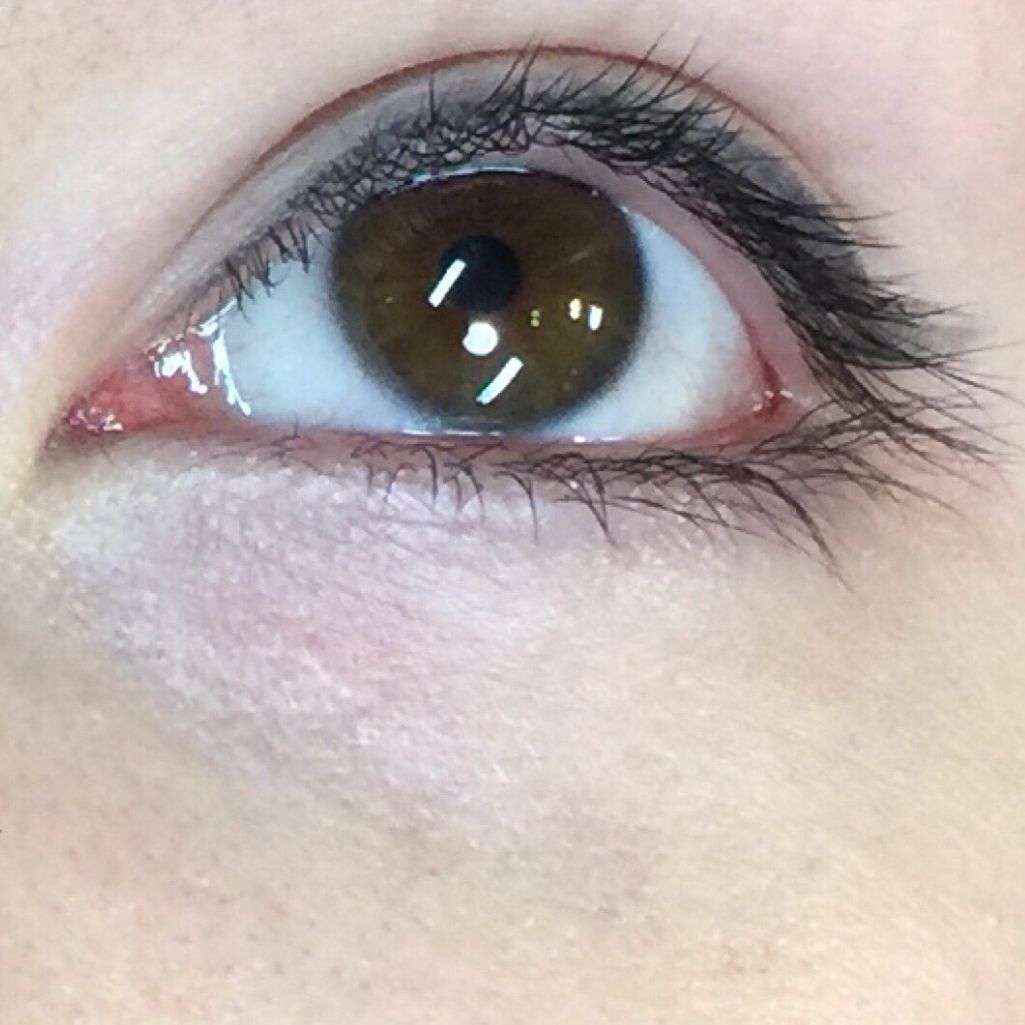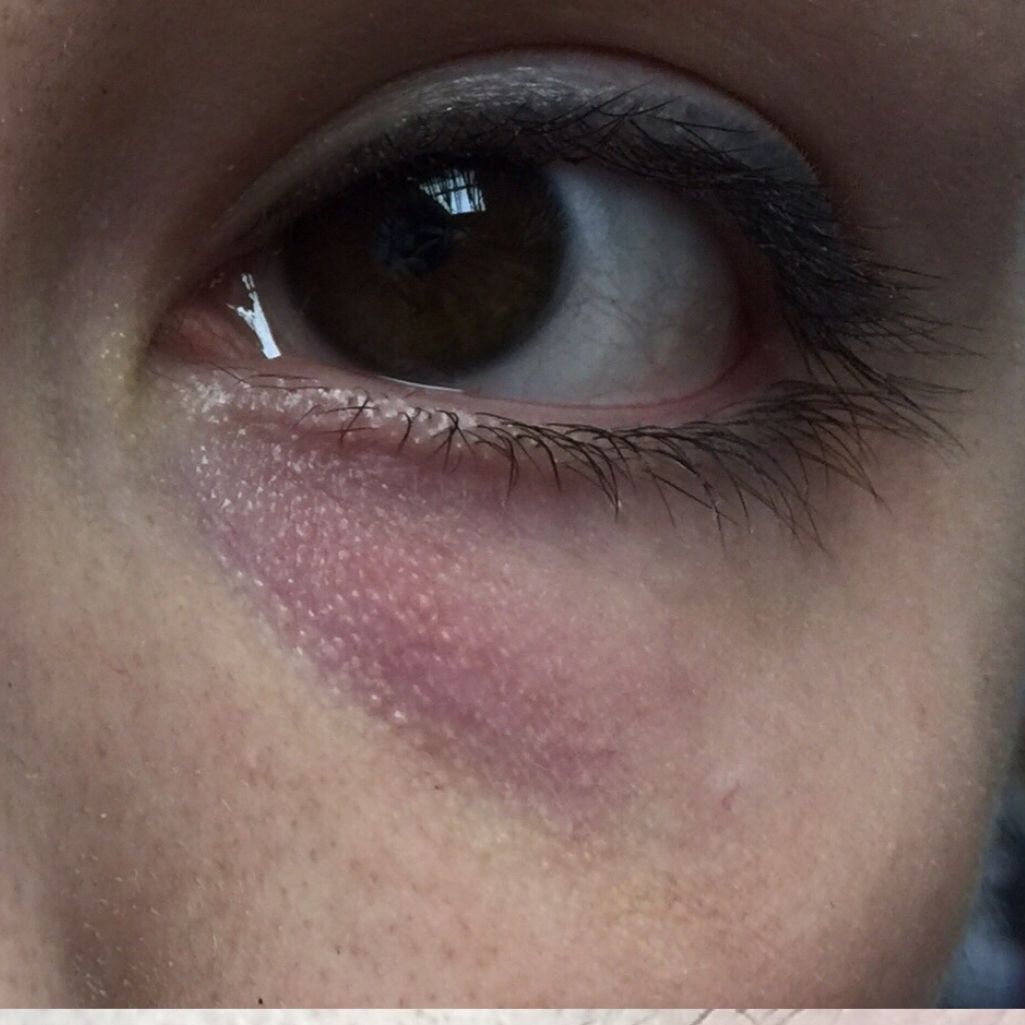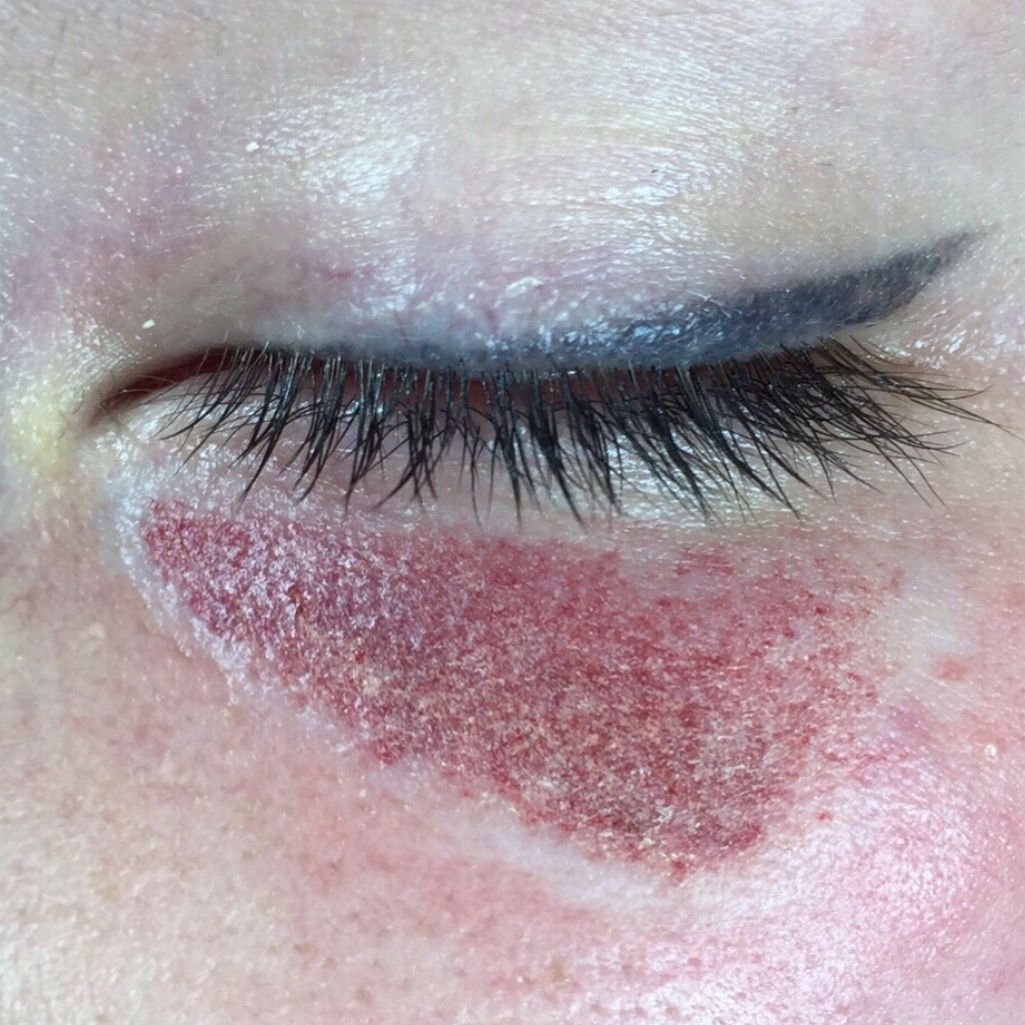Periorbital zone permanent: order around the eyes
Tips for permanent makeup masters

Correction of hyperpigmentation of the area around the eyes is a topic that is relevant for PM masters. Since the skin in this area is very delicate, you need to work here with extreme caution and, of course, with knowledge of a number of nuances.
Anna Zabolotnaya , Head of the Biotek International Academy of PM and Aesthetic Dermo-Pigmentation (Russia), certified artist, international class master teacher in permanent make-up, aesthetic dermopigmentation and trichopigmentation, winner of the first Contour of the Century competition (2003), judge of permanent make-up championships in Russia and abroad, lecturer at the International University of PM (Milan, Italy) (Russia)
In this article, we will touch on a topic that is relevant for PM masters - correction of hyperpigmentation of the periorbital zone. Since the skin around the eyes is very delicate, you need to work here with extreme caution and, of course, with knowledge of a number of nuances. Let's talk about them
Women are very strange creatures.
They cover up bruises under the eyes and draw them beautifully above the eyes.
(Joke)
We have long been accustomed to the fact that aesthetic dermopigmentation (EDP) works wonders not only in the field of decorative make-up, helping to correct the shape and color of the lips, eyebrows, eyelids and other equally important parts of the face, but literally relieves us of complexes, concealing defects such as vitiligo, scarring and even alopecia, effectively working where other methods fail. But it turns out that's not all. With the help of EDP, you can significantly improve the problem of circles under the eyes, which causes so much trouble for both women and men.
First, let's talk about the causes of the problem. There are a lot of them, and here are just a few of them :
- age-related skin changes;
- lack of sleep and overwork;
- kidney disease;
- liver disease;
- allergy;
- work at the computer;
- hyperpigmentation of the periorbital region;
- diabetes;
- excessive alcohol consumption;
- irrational nutrition;
- anemia, or anemia (a group of clinical and hematological syndromes, common to which is a decrease in the concentration of hemoglobin in the blood, more often with a simultaneous decrease in the number or total volume of red blood cells);
- chronic stress and depression;
- the use of cosmetics;
- eye diseases;
- circulatory disorders;
- injury, etc.
Medical solution for dark circles
There are many methods of medical influence on the solution of the problem of hyperpigmentation, but their effectiveness, as well as the possibility of application in general, depend on the cause that caused the problem, and are always associated with a certain risk. As for the EAF, if used correctly, we can help the client in almost any case, except, of course, the most neglected ones.
There are other, more serious ways to eliminate the darkening of the skin around the eyes.
Phototherapy - the action on pigmented areas with the help of high-frequency infrared radiation pulses, which leads to the destruction of melanin - a pigment substance, the excess of which causes darkening of the skin around the eyes. However, this method, for all its effectiveness, can lead to burns and more serious consequences, causing unwanted processes inside the skin.
Laser exposure , as a result of which pigmented areas are eliminated in layers by a laser, is not suitable for very sensitive skin, eye diseases and age-related changes.
Mesotherapy - the introduction of microdoses of drugs under the eyes, into the middle skin layer, which should help improve blood flow and enhance regenerative processes, usually suitable when the causes of the defect are age-related, but completely contraindicated in the case when hyperpigmentation is caused by serious diseases, such as kidney disease and liver, or diabetes.
Finally, there is blepharoplasty, but it is effective in the fight against bags under the eyes and does not give any guarantee of eliminating hyperpigmentation.
Blepharoplasty is an operation to change the shape of the eyelids, the shape of the eyes (from other Greek βλέφαρον ⎼ “eyelid”). This type of surgery involves the excision of excess skin and fatty formations. Indications for blepharoplasty are overhanging of the skin of the upper and lower eyelids, "fat bags" of the eyelids, drooping of the lower corners of the eyes, a certain incision and shape of the eyes.
PM of the periorbital area (before and after the procedure)
Solutions that the master can offer
What does aesthetic dermopigmentation offer? Almost the same, only easier and safer.
The method of elimination of hyperpigmentation of the periorbital area has become a logical continuation of the development of the method of shading on depigmented areas of the skin, and especially on the upper eyelids, the skin of which is similar in structure to the skin under the eyes.
Of all the shading methods for removing hyperpigmentation, two are best suited. The first is good old pointillism.
Pointillism (from French p ointillisme ⎼ literally “point”, point ⎼ “point”), or divisionism, is a stylistic trend in neo-impressionism painting that arose in France around 1885. It is based on the manner of writing with separate (non-isolated) strokes of the correct, dotted or rectangular shape.
It is characterized by the rejection of the physical mixing of colors for the sake of an optical effect (meaning "mixing" on the viewer's retina ). The French artist Georges Seurat is considered the inventor and most famous representative of pointillism.
The idea of using pointillism is based on the fact that the skin has a very heterogeneous color, and if we examine it, say, under a microscope, we will see by no means a monochrome pinkish canvas, but an accumulation of countless dots, the color of which often does not correspond at all to that to which we are used to: there will be green, and blue, and gray, and yellow blotches, which, when mixed optically, if you look at them with the naked eye, give the desired natural skin color.
The second method of shading, which has proven itself in eliminating hyperpigmentation of the area around the eyes, is glazing. This method also came to permanent makeup from the world of art and is a shading with a highly diluted pigment, which is applied to the skin layer by layer.
Glaze (from German lasierung ⎼ “glaze”), glizal or gleize (from English g laze ⎼ “glaze”, “gloss”), ⎼ a technique for obtaining deep iridescent colors by applying translucent paints over the base color.
If the pointillism method creates the necessary color in one plane, then glazing with pigments diluted almost to transparency, as it were, recreates thin layers of the epidermis, each of which also has its own color. Overlaying transparent layers of different shades on top of each other eventually leads to the fact that the hyperpigmented area acquires a natural color.
PM of the periorbital area (before and after the procedure)
Features of work in the area around the eyes
When removing bruises, the order in which pigments of certain colors are applied is very important. First of all, it is necessary to neutralize the blue. For this we use highly diluted pink or orange pigments. Then we proceed to apply pigments close to the color of the skin. And in the end, with the help of white pigment, we paint over wrinkles, visually leveling the skin.
Pigments are selected depending on the main skin color and should not be more than one and a half shades lighter, otherwise you can get the opposite effect: the area around the eyes will be too light, as if the client had just returned from a ski resort.
Usually for work I take 2⎼3 pigments of different colors to achieve more naturalness: pinkish, yellowish and white. Considering that our skin is heterogeneous in texture and color, applying translucent layers of pigment on top of each other, in the end we should get a very natural result.
In most cases, exposure to sunlight on the area around the eyes after the dermopigmentation procedure does not lead to catastrophic consequences. However, we recommend that our clients who have undergone the procedure do not expose themselves to unnecessary risks - it is advisable to wear dark glasses and cover the area around the eyes with a protective cream.
When mixing or superimposing primary and complementary colors, the master must constantly keep in mind the rules of color: which colors are intensifying for others, and which, on the contrary, visually extinguish the colors located nearby. Therefore, starting to work, you should definitely remember the importance of the sequence of applying specific colors.
Light and warm shades create the illusion of volume. Dark and cold colors, on the contrary, visually reduce the object. However, before choosing the right color, make sure it matches the client's skin tone.
Do not mix more than three colors ⎼ to avoid contamination of the ink mixture. When mixing paints, one should take into account the processes that lead to a change in color associated with the chemical interaction of pigments when mixing some paints, ⎼ darkening, fading.
The colors that are most often used to mask bruises under the eyes are: skin 4, skin 25, white.
Do not be afraid that immediately after the procedure, the client will experience slight swelling and small dotted petechiae (hemorrhages). This is because under the influence of the anesthetic, the skin turns white and minor injuries become more noticeable on it. This is temporary and will soon pass.
By the way, skin lightening under the influence of an anesthetic can significantly complicate the work. In addition, to improve the effect, the process of eliminating hyperpigmentation in the periorbital zone is necessarily divided into several stages. Therefore, one procedure, as a rule, lasts no more than an hour. We do not recommend that masters use too many anesthetics. It is enough to confine ourselves to the Mesonamb application ointment.
The material was first published in Permanent No. 4(8)/2017
Read also
- Possibilities of permanent makeup: camouflage
- Areola repigmentation: aesthetics with permanent makeup
- Acne and post-acne: camouflaging skin defects with permanent makeup
- Lip beauty: features of permanent makeup in the perioral area
- Smoothing out irregularities: permanent makeup in the fight against scars
- How to attract a client to a permanent makeup salon?
- What to read? Books for permanent makeup masters
- PM of the periorbital region: advice from Anna Zabolotnaya
- Correction of the periorbital zone with the help of PM: expert advice
- Invasive procedure


